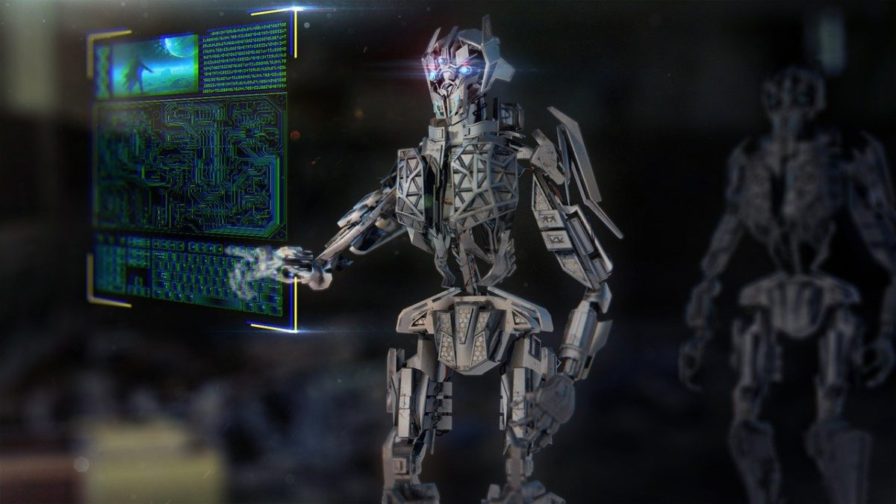
The world of work is always changing, with career options and opportunity never static. We can traverse multiple careers across a lifetime, and work across time zones and continents. Yet we need to find ways to keep our work relevant and meaningful. At Codemotion, careers in tech are more than just a job. Through work we can create the tech of the future and innovate in ways earlier generations never thought possible. As technology evolves exponentially, so does the world of work. We take a look back at some insights and predictions from our speakers:
Work automation is real and unexpected

Agnieskzka Walorska, CEO of Creative Construction delivered a talk about the future of work. She shared stats revealing that job losses are coming:
- 38% job lost by 2030
- 47% by 2040
What is distinct is that of these jobs, the majority are performed by men. She notes traditionally female roles have an emphasis on soft skills such as a secretary or personal assistant:
“Where there is a lot of unpredictable tasks and a lot of implicit knowledge. These roles require more compassion and more empathy. That’s basically what machines are not really good at doing at the time. So what we might see in the years to come is an involuntary shift in the division of labour because the male jobs which machines can do better than humans are dying out. The typically female jobs are the jobs that machine will probably not be able to do.”
This is not suggesting that these roles can only be carried out by women. Rather, they will require some men whose roles are made obsolete to gain greater soft skills if they are to gain future employment. Agnieskzka reveals that research into male unemployment where women are the main provider has revealed an unexpected effect: when there is a 3.7% increase in male unemployment, it leads to a 12% decrease in domestic abuse, surmising, ” when men depend on women as a provider they will not be that eager to actually use violence use violence at home”.
Agnieskzka ‘s talk uses some fantastic slides and videos, take a look!
Freelance work and the gig economy will rise

These been plenty of noise over the last few years about the rise in freelancing and the gig economy. Have you ever worked as a freelancer or done side gigs outside your primary workplace? According to Mark Beylin from Bounties Network, we’re entering an era of Freelance 2.0. The first wave was the traditional gig economy where work was acquired through gig economy companies such as freelancer.com, uber. The future, is a more nuanced mesh network.
Mark believes that a blockchain platform can remove the middle man and reduce the pain of organising international payments with legacy financial institutions. He also notes that prices can be more precise:
“Very often the difficulty or the amount of work in a task is very much dependent on on the company that it’s being done for. If it’s a code contribution it depends on the stack that’s being used. Or how much legacy code do you have to work with versus how much can you do on your own .”
A working example (not always evident in the blockchain world) is via Gitcoin. Gitcoin is an open-source platform on the Ethereum platform, that allows open source developers to get paid for their work contributing to open source projects. In return, the open-source projects also get exposure to a vast community of developers they might not have had otherwise.
Mark also believes that we’ll see a greater migration of skills back and forth between open-source organisations due to their use of freelancers. Whether working on JSON platforms, technology architecture or debugging, such roles create benefits for the freelancer, the companies, and the technology.
You can also take a look at Mark’s slides on our Slideshare
AI is Ubiquitous at Work

According to Alessandro La Volpe, VicePresident IBM Cloud for Italy, technology is evolving rapidly and transforming workplaces at an exponential rate. One of the ways is through applications of AI. He warns:
“AI is valuable only if we apply the technology to something impactful. I prefer to talk about augmented intelligence when we apply AI to human beings to humans – not to replace humans, but to help each of us.”
Alessandro believes there are three central tenants to AI at work:
1. 57% of with a strategy to disrupt their market are owners of a platform business model. Companies that are succeeding today are inventing themselves around digital platforms. “When you combine technologies, data, people, and processes you’re gonna start winning in the market”
2. The world’s incumbents own the world’s most valuable sources of data: the 80% not on the web. Data is the new natural research. Combine it with your people for competitive advantage.
3. 65% of the scale of the kids going to school today will eventually do a job which does not exist as of today. “How can I help the next generation to be ready for something that is unknown?”
A hackathon in collaboration with IBM Italia, the City of Genova, Codemotion and others was launched to look at waste (garbage) solutions for the city. The contest involved the development of a prototype of an IT application on the IBM Cloud platform. It’s use through software and image recognition algorithms, allowed the identification of any abuses and their real-time reporting via SMS and other tools. The reporting forms needed to contain various elements including: photo / geolocation, the type of bulky waste highlighting its possible hazard, information on who downloaded the bulky waste, detection of anomalies. The winner was Vincenzo De Francesco, a student at University Federico Il Napoli.
Take a look at Alessandro’s talk and follow along with his slides:
Learn more about work, jobs, and careers of the future at Codemotion Amsterdam
Looking at what’s next for your career? Come join us at the next Codemotion Amsterdam in May. Our conferences attract developers, IT professionals with different backgrounds and levels of experience. Therefore, we provide our attendees with technical excellence and cutting-edge technologies. We also provide hands-on activities, best practices and case studies to allow them to grow into even better developers.
Our attendees are driven by a great passion for coding, a desire to share their knowledge and to make new personal and business connections to lead the innovation around them. They are literally coding the future of us all, in the smartest, coolest, best environment, Codemotion.
Be part of it all: join us in Amsterdam!